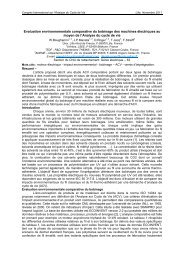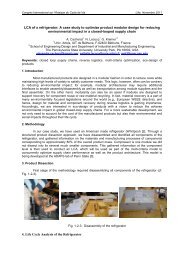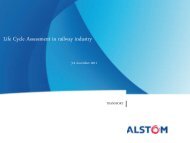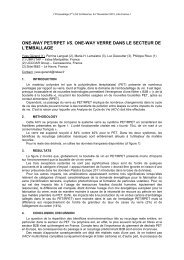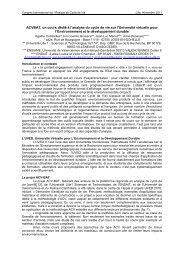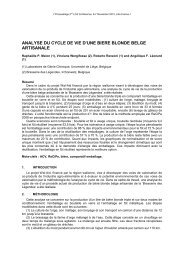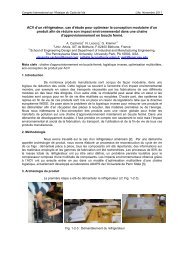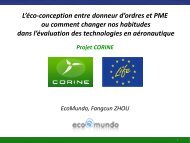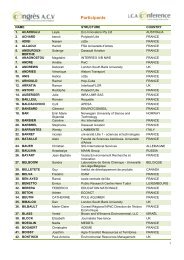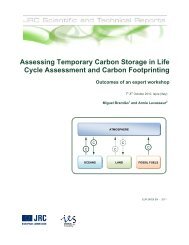Untitled - avniR
Untitled - avniR
Untitled - avniR
You also want an ePaper? Increase the reach of your titles
YUMPU automatically turns print PDFs into web optimized ePapers that Google loves.
Congrès International sur l’Analyse du Cycle de Vie Lille, Novembre 2011<br />
FIG 1. Impact indicators of the 3 dyeing processes<br />
Figure 1 shows that Pad-therm process gets best results for all impact indicators. Dyeing<br />
continuous processes have the advantage of low water and chemicals consumptions. Energy consumption<br />
necessary for the 2 other processes is high due to the large amount of water heated.<br />
3. Discussions<br />
For this study, we developed a method to reveal what is the less impacting process. Apply life<br />
cycle assessment to textile dyeing processes has some limits.<br />
<br />
<br />
<br />
The results obtained are related to the functional unit, and can not be extrapolated to another K/S<br />
or another scale factor.<br />
Toxicity of carriers was not taken into account due to the lack of data.<br />
We have chosen three combinations among a multitude; the results would have been different with<br />
other recipes.<br />
4. Conclusion<br />
For the comparison of an innovative process with a standard one, a laboratory step is necessary to<br />
determine equivalent scenarios. The choosen functional unit depends on it.<br />
Life cycle assessment tool can also guide companies for the implementation of new processes or<br />
technologies. After obtaining results, an aspect of decision making occurs because the processes can lead<br />
to different results depending on the studied impacts.<br />
Impact indicators related to toxicity are difficult to take into account due to the lack of data and the<br />
non reliable calculation methods. However, we started a study aiming at substitute the traditional carriers<br />
which are toxic by nontoxic and biosourced molecules. Principles related to the substitution of molecules<br />
have been applied<br />
References<br />
[1] Eija Nieminen et al., EU COST Action 628: life cycle assessment (LCA) of textile products, ecoefficiency<br />
and definition of best available technology (BAT) of textile processing. Journal of Cleaner<br />
Production, 2007.<br />
[2] Wilhelm Schramm, Possibilities and limitations of a comparative assessment of process technologies<br />
from a cleaner production point of view. Journal of cleaner production, 1998.<br />
- 90 -



